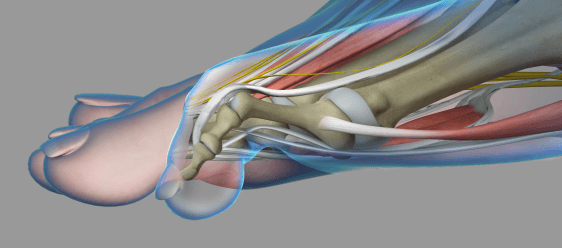Hammertoes
A hammertoe is a deformity of a lesser toe (second through fifth toes), where the toe gets bent upward at the toe’s middle joint, resembling a hammer. The bent portion may rub against a shoe causing pain, irritation and develop corns. It is caused by wearing shoes that are too tight or narrow near the toes, when the second toe is larger than the first, and as a complication of arthritis and certain neuromuscular conditions.

Early stages of hammertoe are flexible and may be treated by conservative measures such as strapping, padding and wearing appropriate footwear. In more severe cases and when conservative treatment does not help, surgical correction is indicated. Surgery may include a tendon transfer procedure, where a tendon is rearranged from the lower side of the toe to the top, to pull the bent joint down and straighten the toe.
Stiff or fixed hammertoes may be corrected by joint resection or joint fusion (permanent straightening of the toe), which involves cutting tendons and ligaments of the joint and removing part of the bone to help straighten the joint. The straightened toe is held by pins for 3-4 weeks following surgery.
There may be some swelling, redness and stiffness following surgery. A special shoe may be ordered to help with walking. As with any surgical procedure, hammertoe correction may be associated with a few risks including infection, bleeding, nerve injury or poor alignment of the toe.











